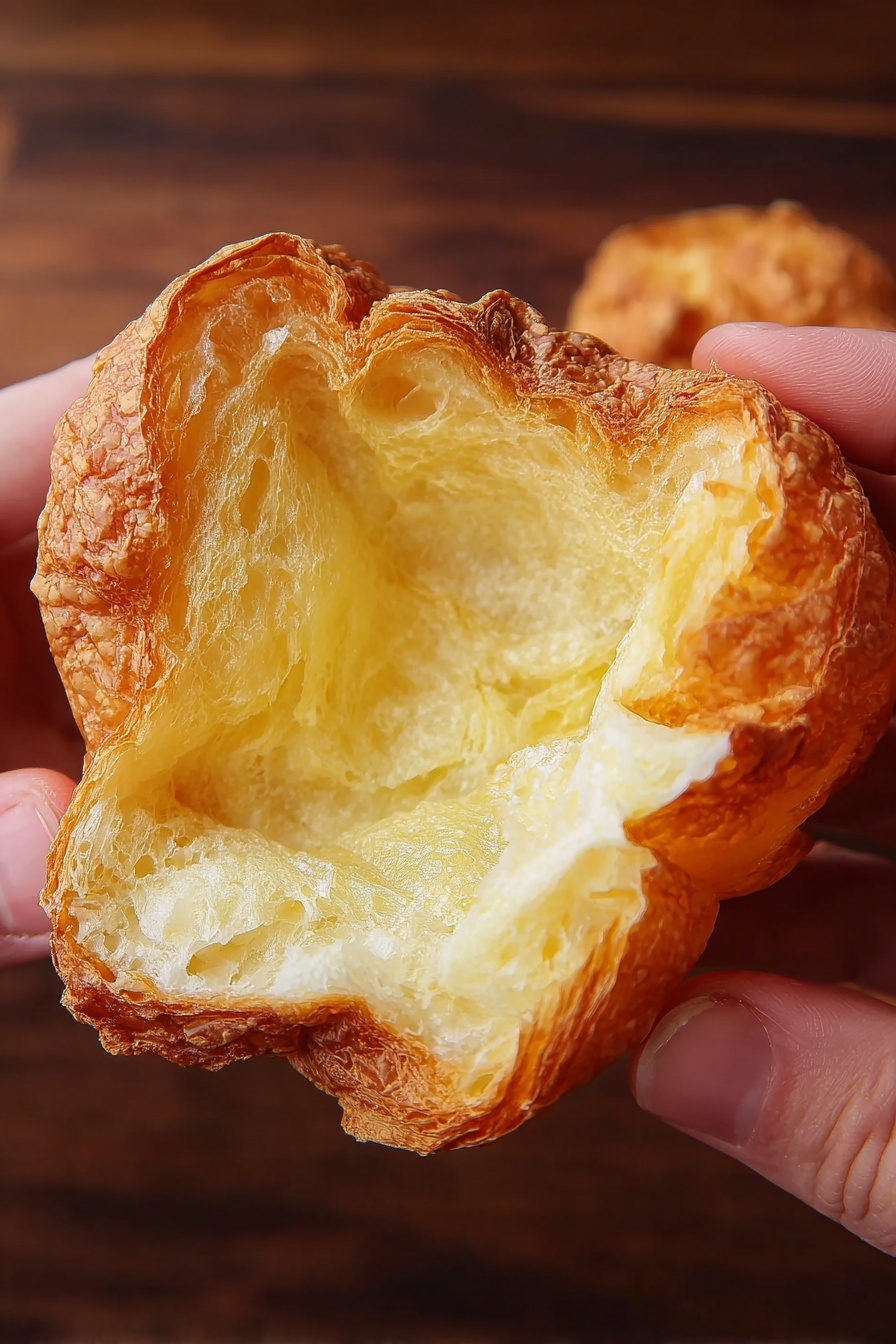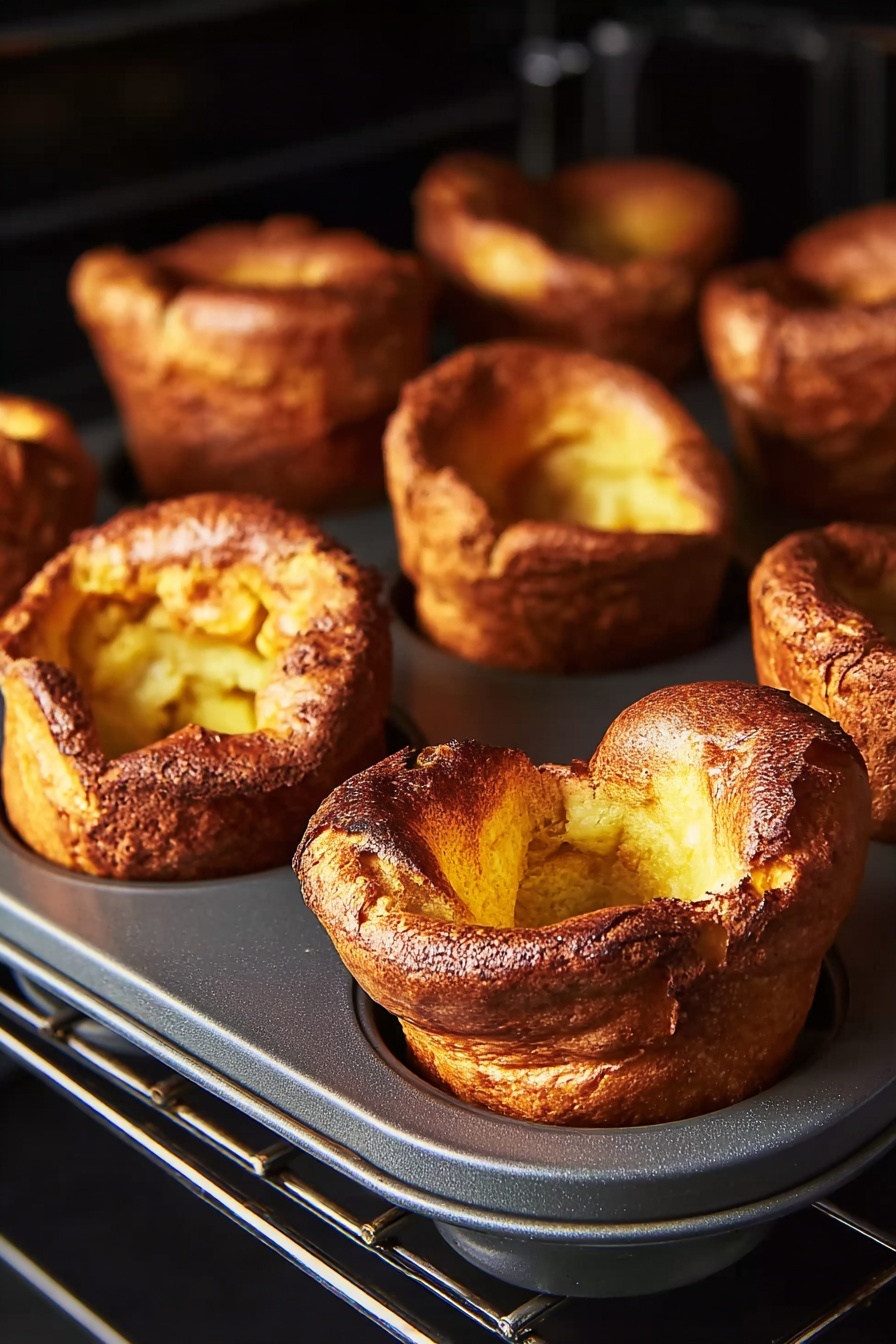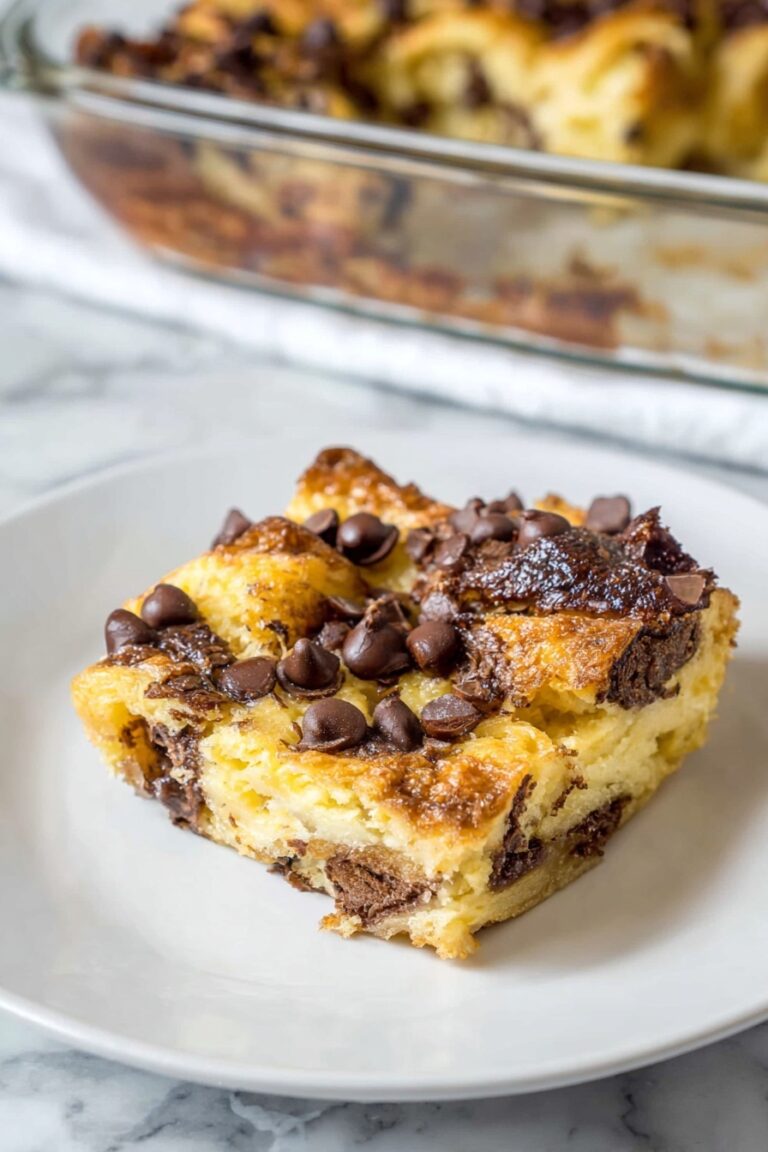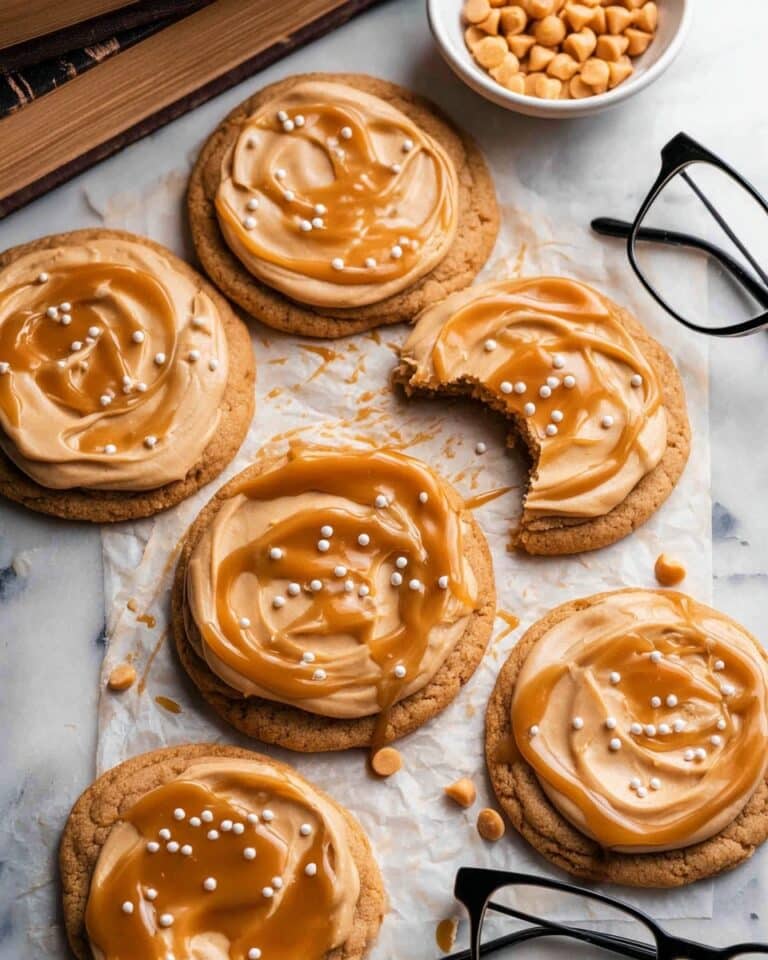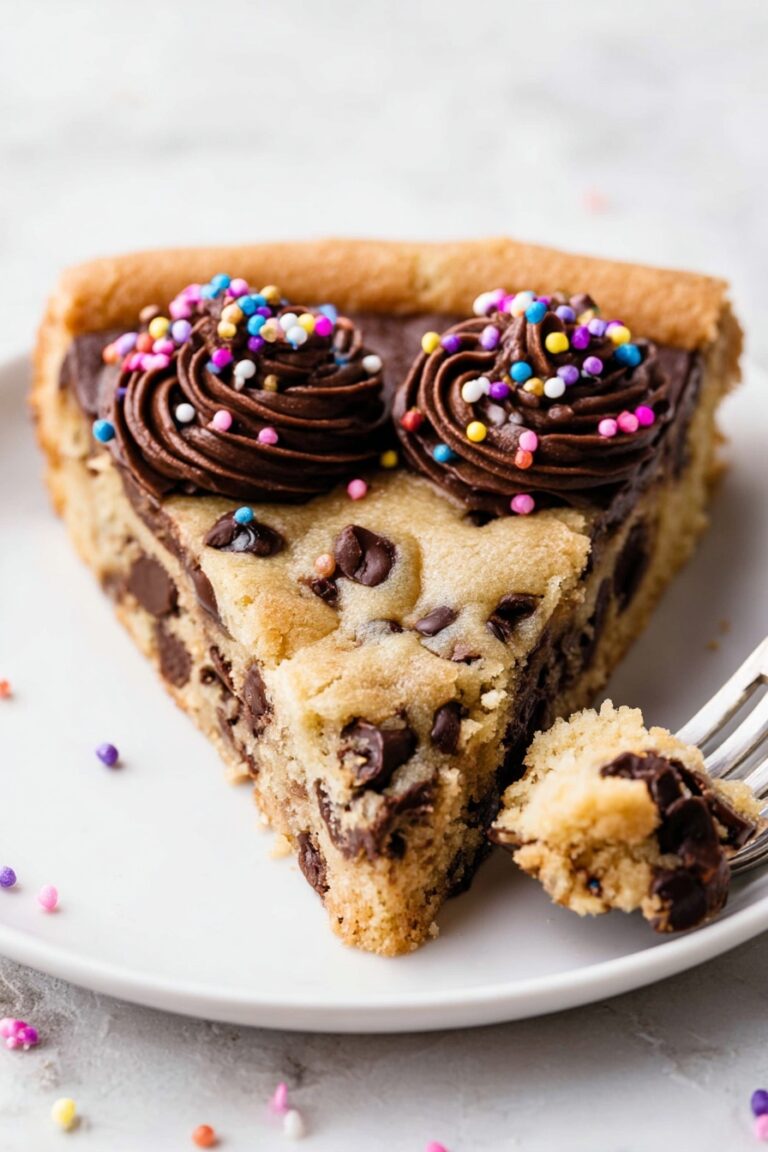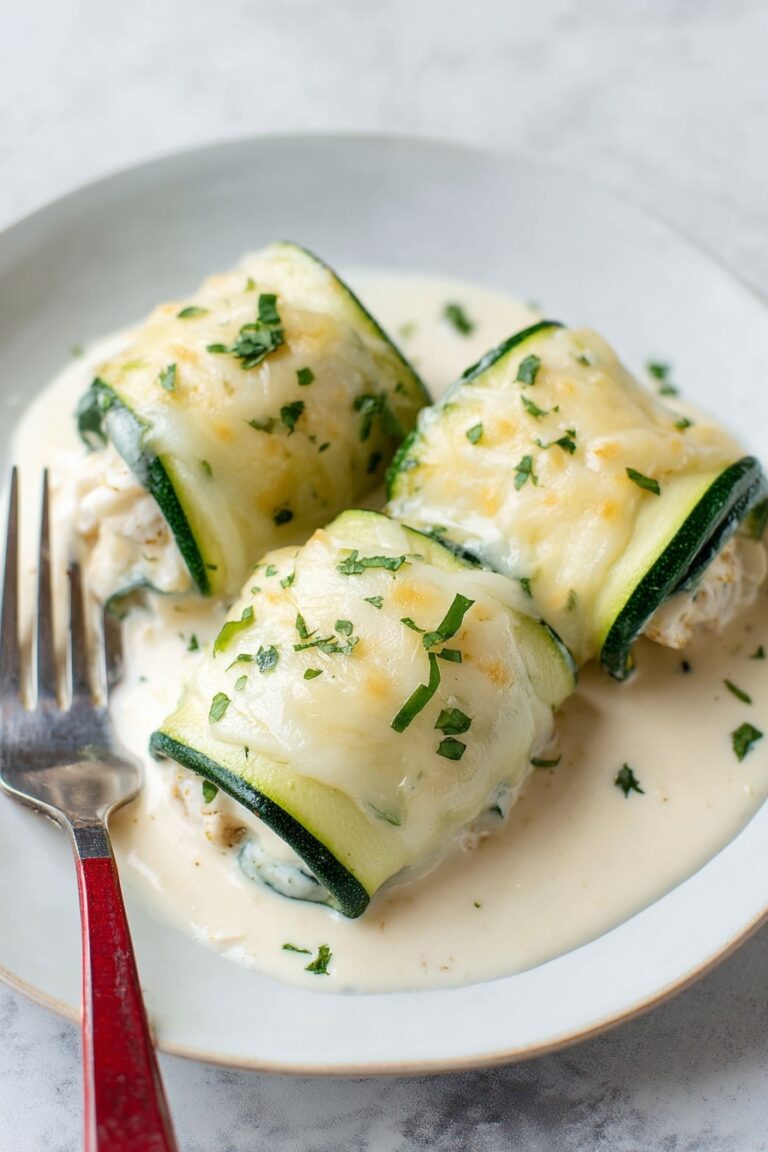Perfect Yorkshire Pudding Recipe
If you’ve ever wanted to master the art of the classic British side that’s both crispy on the outside and delightfully fluffy on the inside, you’re in the right place. This is my go-to, Perfect Yorkshire Pudding Recipe—and trust me, it’s fan-freaking-tastic every single time. Whether you’re seasoning up a Sunday roast or just craving a scrumptious treat, this recipe will guide you through making Yorkshires that rise like a dream and taste incredible. Let’s get you baking the Perfect Yorkshire Pudding Recipe that’ll wow your friends and family!
Why This Recipe Works
- Rested Batter Magic: Resting the batter overnight lets the flour and liquids marry, giving Yorkshire Puddings a superior rise and tender crumb.
- High Heat, Hot Fat: Preheating the fat until it’s almost smoking ensures that sizzle and steam that puff up the puddings beautifully.
- Simple Ingredients, Big Impact: Just eggs, flour, milk, a bit of water, salt, and fat—yet the balance creates incredible texture and flavor.
- Flexible Cooking Methods: Whether you use cast iron pans, muffin tins, or popover pans, this recipe adapts without sacrificing results.
Ingredients & Why They Work
Every ingredient here plays a crucial role in the success of your Perfect Yorkshire Pudding Recipe. Using whole milk and letting the batter rest really lifts these puddings from “just okay” to “wow.” I always recommend fresh, high-quality eggs, and choosing the right fat can really elevate your final result.
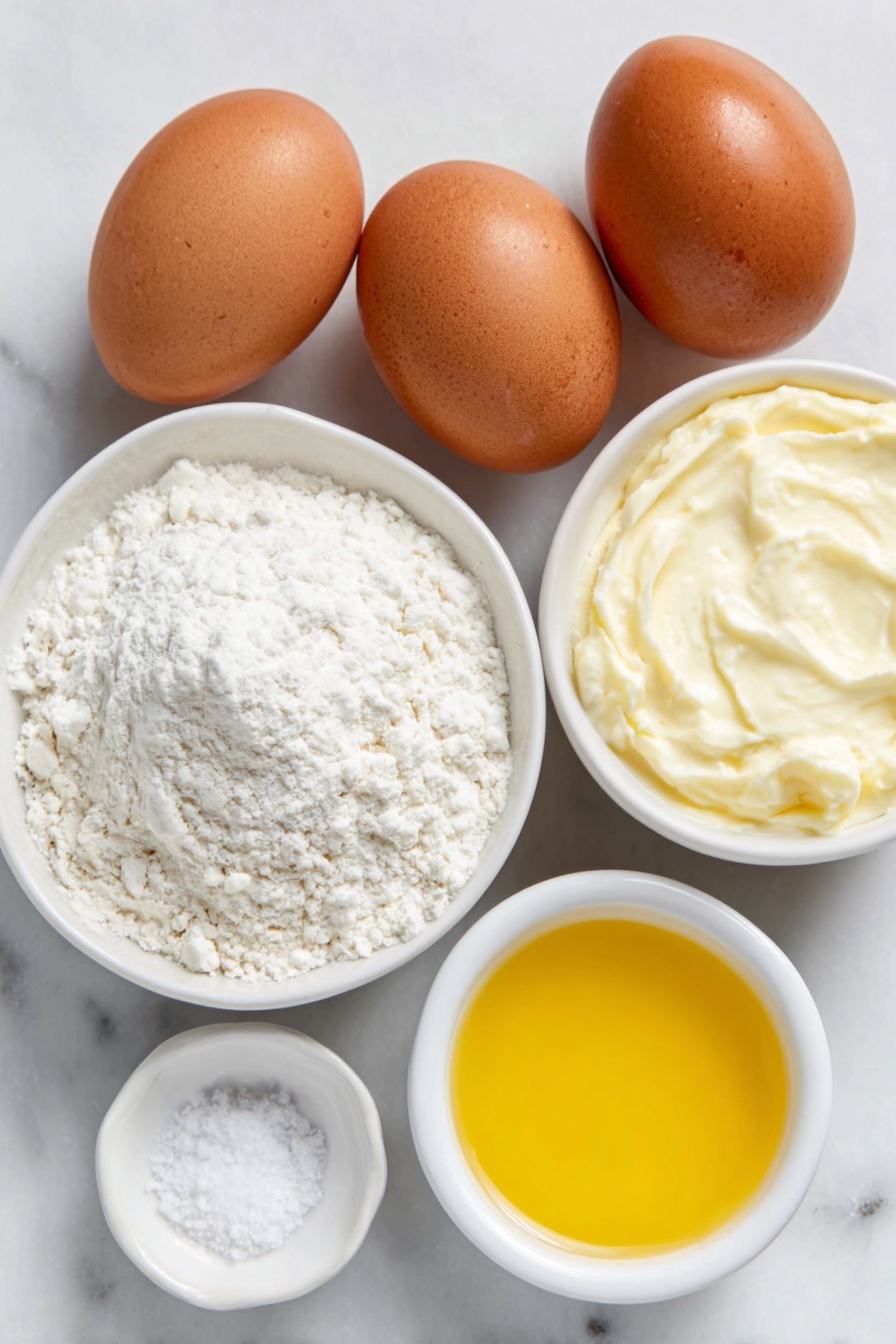
- Eggs: They provide structure and help the batter rise—always use large eggs for consistency.
- All-purpose flour: The backbone of the pudding; it creates that essential chewy-yet-soft texture.
- Whole milk: Adds richness and moisture—keep the fat or adjust as noted if using lower fat milk.
- Water: Lightens the batter just enough to ensure a crisp outer shell without being dense.
- Kosher salt: Enhances flavor subtly without overwhelming the delicate puddings.
- Beef drippings or fat: Key for flavor and that unbeatable crispy crust. I love using beef drippings for extra savoriness, but vegetable oil or lard work perfectly too.
Make It Your Way
Everyone loves making a dish their own, and the Perfect Yorkshire Pudding Recipe is no exception. I like to keep mine traditional but sometimes twist things up with different fats or pairings depending on the season or occasion. Let your creativity run with me and discover your favorite version!
- Variation: I once swapped beef drippings for duck fat in this recipe, and the flavor was rich and irresistible—worth a try if you’re feeling adventurous.
- Dietary modification: For a lighter option, you can try using olive oil, which gives a surprisingly pleasant flavor without compromising the rise.
- Seasonal twist: Adding finely chopped fresh herbs like rosemary or thyme to the batter provides a subtle, delightful aroma.
Step-by-Step: How I Make Perfect Yorkshire Pudding Recipe
Step 1: Whisking the Batter to Perfect Smoothness
Start by combining your eggs, flour, whole milk, water, and a pinch of kosher salt in a medium bowl. Whisk everything together until you achieve a silky-smooth batter with no lumps in sight. This step is crucial—you want a batter that’s free of clumps to ensure an even rise and light texture. Nothing worse than trying to bite through doughy pockets, right? I like to use a balloon whisk because it effortlessly blends the mixture in minutes.
Step 2: Let the Batter Rest (Trust Me, It’s Worth It!)
This is the secret weapon of my Perfect Yorkshire Pudding Recipe. Cover the batter and let it rest at room temperature for at least 30 minutes. But if you have the time (and patience!), refrigerate it overnight or up to 3 days. During this rest, the flour absorbs the liquids fully, creating a batter that puffs up beautifully and crisps up perfectly when baked. I’ve skipped this step before and the puds were noticeably less impressive, so don’t skip it if you can avoid it.
Step 3: Preheat the Oven and Hot Fat
Set your oven to a blazing 450°F (230°C). While it’s heating, place your choice of fat—whether it’s beef drippings, lard, or veg oil—into your pans. I swear by cast iron skillets for the evenest heat, but popover or muffin tins are great too. Pop your fat-filled pans into the oven and wait until the fat is smoking hot—about 10 minutes. This sizzling hot fat is what gives your Yorkshire puddings their legendary lift and crisp base, so don’t rush this step!
Step 4: Pour Batter Carefully and Bake
Remove those piping hot pans carefully—they’ll be scorching. Pour your rested batter evenly into each well or pan, filling about 1/2 to 3/4 full. Immediately return them to the oven and bake. For mini or muffin-sized puddings, expect about 15 minutes; for larger popover or skillet sizes, closer to 25 minutes. You’ll know they’re done when they’ve quadrupled in size, have a deep golden-brown color, smell amazing, and sound hollow when you tap the crust. Wait longer and they risk deflating or drying out!
Step 5: Serve Right Away for Best Crispiness
Yorkshire puddings are at their absolute best fresh from the oven—crispy, puffy, and tender. Serve immediately alongside your roast or gravy. If you happen to have leftovers, cool completely, then store them in freezer bags for future cravings.
Tips from My Kitchen
- Keep the Fat Hot: I once tried pouring batter into warm, but not smoking fat—and my puddings didn’t rise nearly as well, so wait for that sizzle!
- Rest Batter Overnight: Resting the batter helped me nail the puffiness each time; it’s worth the wait for superior texture.
- Don’t Peek Early: Opening the oven too soon can make the puddings collapse—trust the timer and your senses.
- Use the Right Pan: Cast iron skillets give an unbeatable crisp crust, but if you only have muffin tins, just increase baking time slightly.
How to Serve Perfect Yorkshire Pudding Recipe
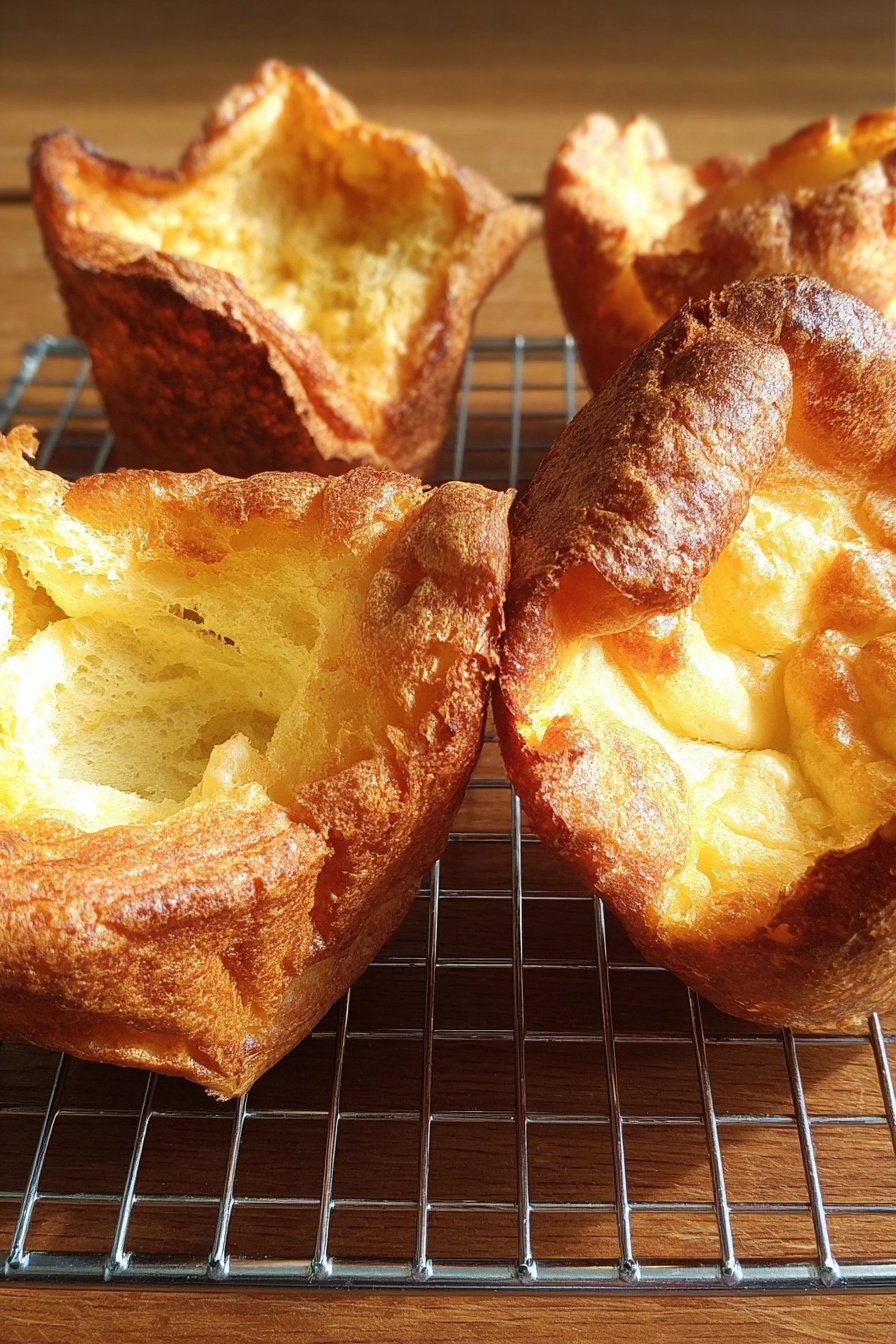
Garnishes
I usually keep garnishes classic—freshly chopped parsley sprinkled on top or a little spoonful of rich onion gravy ladled over the puddings. Sometimes, I add a dollop of horseradish cream if I want a little bite. These simple touches bring the savory flavors forward without overpowering the delicate texture.
Side Dishes
Yorkshire puddings shine alongside roast beef, roasted root vegetables, and lashings of homemade gravy. When I make this recipe, it’s almost always paired with a Sunday roast and buttery mashed potatoes. But they’re surprisingly great with stews or even just with baked beans for an easy comfort meal.
Creative Ways to Present
For special occasions, I like to serve individual Yorkshire puddings filled with creamy mushroom ragout or a bit of leftover roast beef and horseradish mousse as a fancy appetizer. They look charming and bring smiles every time! You could also drizzle a balsamic glaze for a sweet-savory twist.
Make Ahead and Storage
Storing Leftovers
Once cooled completely, I pop leftover Yorkshire puddings into a zipper-lock freezer bag. Keeping them airtight ensures they won’t dry out in the fridge or freezer. I’ve found you can keep them fresh in the fridge for up to 2 days, but honestly, they rarely last that long!
Freezing
Freezing Yorkshire puddings is a saver for busy weeks. After cooling, slide them in a single layer on a baking sheet to flash freeze, then transfer to a freezer bag. They freeze well for up to 3 months. When I’ve reheated frozen puffs, the texture bounces right back with proper warming.
Reheating
To bring leftovers back to life, I pop them into a hot toaster oven or regular oven at 375°F (190°C) for about 5–8 minutes until they’re warmed through and crisp again. Avoid microwaving if you want to keep that glorious texture intact!
FAQs
-
What is the secret to getting Yorkshire puddings to rise?
The key is a very hot oven and hot fat. Preheating the fat until it’s almost smoking creates steam on contact with the batter, which helps the puddings puff up spectacularly. Also, letting your batter rest allows the flour to absorb moisture, helping the rise and texture.
-
Can I use low-fat milk in Perfect Yorkshire Pudding Recipe?
Yes, but I recommend omitting the water and increasing the milk to about 200g if using skim or low-fat milk. This adjustment helps maintain the batter’s richness and structure.
-
How do I know when my Yorkshire puddings are done baking?
They should have puffed up to about four times their original size, be a deep golden brown all over, feel crisp to the touch, and sound hollow when tapped. Resist opening the oven too early to avoid collapse.
-
Can I prepare the batter in advance?
Absolutely! In fact, resting the batter overnight in the fridge improves texture and rise. Just remember to bring it back to room temperature before baking for best results.
-
What’s the best fat to use for Yorkshire puddings?
Beef drippings create the best traditional flavor and crispness, but lard, vegetable oil, or shortening also work well. Whatever fat you choose, make sure it’s piping hot before adding the batter.
Final Thoughts
Over the years, perfecting this Yorkshire pudding recipe has become a joyful ritual that connects me to family, heritage, and incredible food moments. I hope you enjoy making it as much as I do! It’s that kind of simple recipe that feels fancy yet is surprisingly easy, especially once you get the hang of the resting and baking steps. So go ahead—try this Perfect Yorkshire Pudding Recipe on your next roast night and watch jaws drop when these golden beauties hit the table. Your new favorite kitchen triumph awaits!
Print
Perfect Yorkshire Pudding Recipe
- Prep Time: 5 minutes
- Cook Time: 30 minutes
- Total Time: 65 minutes
- Yield: 8 Yorkshire puddings
- Category: Side Dish
- Method: Baking
- Cuisine: British
- Diet: Vegetarian
Description
Traditional British Yorkshire Pudding recipe with a crisp exterior and soft, airy interior. Made from a simple batter of eggs, flour, milk, water, and salt, baked in hot fat until puffed and golden brown. Perfect as a side dish for roasts or a base for savory toppings.
Ingredients
Batter
- 4 large eggs (200 g; 7 ounces)
- 150 g all-purpose flour (5.25 ounces; about 1 cup plus 2 teaspoons)
- 175 g whole milk (6 ounces; 3/4 cup)
- 25 g water (0.85 ounces; 1 tablespoon plus 2 teaspoons)
- 2 g kosher salt (about 1/2 teaspoon)
Cooking Fat
- 100 ml beef drippings, lard, shortening, or vegetable oil (about 1/2 cup)
Instructions
- Prepare Batter, Combine eggs, flour, milk, water, and salt in a medium bowl and whisk until a smooth batter is formed. Let the batter rest at room temperature for at least 30 minutes. For best results, transfer the batter to an airtight container and refrigerate overnight or up to 3 days. Remove from refrigerator while preheating the oven.
- Preheat Oven and Fat, Adjust the oven rack to the center and preheat to 450°F (230°C). Divide the cooking fat evenly between two 8-inch cast iron or oven-safe non-stick skillets, two 6-well popover tins, one 12-well standard muffin tin, or one 24-well mini muffin tin. Place the pans in the oven and preheat until the fat is smoking hot, about 10 minutes.
- Fill Pans with Batter, Transfer the hot pans to a heat-proof surface. Divide the batter evenly between every well or between the two pans. Fill the wells between 1/2 and 3/4 full; if using pans, fill about 1/4 full. Immediately return the pans to the oven.
- Bake Yorkshire Puddings, Bake until the puddings have quadrupled in volume, are deep brown all over, crisp to the touch, and sound hollow when tapped. Small puddings take about 15 minutes, while popover- or skillet-sized ones take around 25 minutes.
- Serve or Store, Serve the Yorkshire puddings immediately. Alternatively, cool completely, transfer to a zipper-lock freezer bag, and freeze for up to 3 months. Reheat in a hot toaster oven before serving.
Notes
- Resting the batter overnight produces the best rise and texture, but puddings can be baked immediately after making the batter if needed.
- To make a full 12 popovers using a 6-well popover pan, scale up the recipe by 50%.
- If using skim or low-fat milk, omit the water and increase milk to 200 g (7 ounces; about 1 cup minus 2 tablespoons).
- Ensure the fat is smoking hot before adding batter for maximum puff.
Nutrition
- Serving Size: 1 pudding
- Calories: 180 kcal
- Sugar: 1 g
- Sodium: 150 mg
- Fat: 10 g
- Saturated Fat: 3 g
- Unsaturated Fat: 6 g
- Trans Fat: 0 g
- Carbohydrates: 15 g
- Fiber: 1 g
- Protein: 6 g
- Cholesterol: 110 mg

